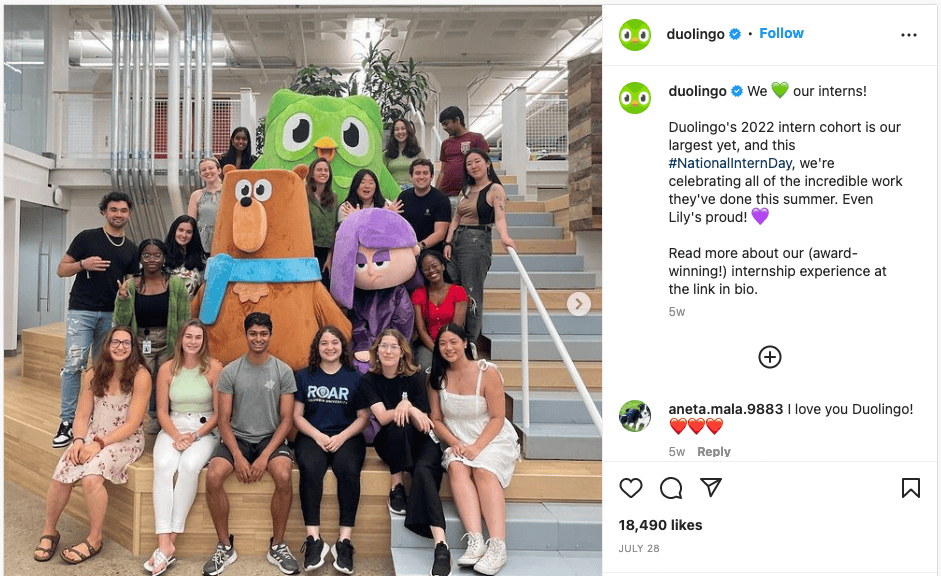The amount of time adults spend on social media is growing exponentially. In 2022, Statista reports that, globally, adults spend an average of 145 minutes daily on social media. In many cases, consumers are spending more time on social media than on any other form of media.
[playht_player width=”100%” height=”175″ voice=”Mark”]
For a lot of social media users, this is their main source of news, local information, and their top method of staying in touch with family and loved ones. With so much of our attention directed at social media, it’s no wonder why major brands have leveraged it for growth. But harnessing the power of social media isn’t quite as easy as logging in and posting – it’s full of social media challenges.
What are the main social media challenges facing businesses? How do we overcome these social media challenges? We’ll cover the answer to these questions and more below.
Is social media marketing right for your business?
Smallbizgenius reports that across 14 major industries, social media is responsible for over 50% of revenue. In the same piece, we learn that companies with a social media strategy meet their revenue goals more often than those that aren’t using social media for business. They also have more success with conversions.
Social media has been specifically designed to draw your attention and retain it. The goal of every major social platform is to increase the amount of time you spend on the app. The more time you spend there, the more ads you’ll see and the more revenue that platform will make from your use.
With this in mind, it’s easy to see why social media platforms would pour resources into research and development aimed at increasing the amount of time you spend on their platform each day. It is their bread and butter, and it’s working. With each passing year, our average daily use goes up.
Knowing that the vast majority of people have their eyes directed at social media and the amount of time they spend there is growing every year, it’s no wonder this marketing channel is growing in popularity.
Social media can:
- Increase your sales
- Help you reach your revenue goals
- Reach a larger audience at a lower cost
- Be incredibly versatile and accommodate just about any marketing campaign you can dream up
- Increase website traffic
- Help you get to know your customers better
- Build brand awareness and recognition
And so much more. It’s hard to imagine a scenario where social media would not benefit a business somehow.
Which social media is best for business?
Each social media platform has its strengths and weaknesses. By sheer numbers, Facebook still dominates with 2.9 billion users. Broadband Search reports that people spend the most time on Facebook, as well.

Image Source: BroadbandSearch.net
However, things change rapidly on the internet. TikTok, Snapchat, Instagram, and Twitter are close behind Facebook and could overtake the platform soon when it comes to daily time spent.
That said, the platform that will perform best for your business isn’t always the platform with the most users. Depending on your specific goals, location, target demographic, and more, the social media platform that’s best for you can vary. For instance, if your business relies on the patronage of young people, Snapchat might be a better choice for you than Facebook due to its younger user base.
Is social media marketing difficult?
While it is entirely possible to stumble upon some social media luck when something you post goes viral, it is rare, and without a powerful strategy, it can fall off just as fast as it picked up. In the early days of social media, there was less noise, less competition, and fewer people trying to fight for users’ attention, making any marketing efforts feel easy compared to traditional media. Today, however, social media is saturated with businesses competing for impressions, click-throughs, and conversions.
There is no doubt that in 2022, social media marketing can be complicated. Still, by identifying the most common challenges faced by marketers in online social spaces and understanding how to overcome them, you’ll significantly improve your chances of success. Let’s take a look at what these challenges are.
6 Common Social Media Marketing Challenges
- Consistency
- Engagement
- Time-Management
- Approachability – not trying too hard
- Knowing your target audience
- Understanding the platform – sizes, trends, etc
Challenge #1: Consistency
Consistency is how we build trust with our audience and potential customers. When we use social media with a consistent voice, our audience begins to recognize that voice. As such, a consistent voice is an easy way to build brand loyalty.
Keeping your social media fresh and up to date is also a great way to remind your audience that you’re there. Repetition is a powerful tool in marketing, providing an avenue for businesses to create “top-of-mind” awareness.
The Twitter account for Levi Strauss & Co is an example of how inconsistency can produce lackluster results. Their account was started in 2009 and in 13 years, they’ve only amassed 17,000 followers. Their tweets come with days and sometimes weeks in between and seem to produce little to no engagement.
Starbucks, on the other hand, joined Twitter just a few years earlier, posts consistently with an undeniably consistent brand voice, responds to its fans often, and have managed to grow its account to over 11 million followers.
So, while it may be challenging to make the time to be consistent with your social media marketing, the payoff can make it all worth it.
Meet the challenge of consistency by:
- Creating a content calendar to ensure consistent posting.
- Keeping your voice and brand messaging consistent across platforms and your website as well as your email marketing.
- Responding to comments and messages from your audience as soon as possible.
Challenge #2: Engagement
Engagement on social media is what feeds the algorithms. Keywords, content, and hashtags are all helpful, as well, but what truly pleases those algorithm gods is engagement.
Many businesses struggle to build their engagement levels on social media. We’ve all experienced putting time, effort, and money into a social media post, only to have no one respond. But, when a business gets the formula right, the results can be dramatic.
For example, ColourPop Cosmetics clearly works with a beauty marketing agency that knows their target audience. Through posts like the one below, this beloved brand has amassed over 10 million followers on Instagram:

Image Source: ColourPop Cosmetics Instagram
Notice the clever call to action in the description, asking followers to tag a bestie to be entered to win. Over 4000 comments and 12,000 likes are the result of this creative campaign to drive engagement and followership.
How to promote engagement on your social media channels:
- Ask your audience questions you know they will feel compelled to answer while sticking to relevant topics. Polls are a fun way to accomplish this and make engagement easier for your audience.
- Think about what your audience wants to see, rather than what you want to sell.
- Be yourself and show your audience that there are likable, approachable human beings behind the brand.
- Engage with other people’s content, especially if they’re posting about your products or services. Share their content as well.
- Respond to comments and messages as soon as you possibly can.
- Use relevant hashtags so others who are interested in the topic can find you.
- Contests can be a powerful tool for increasing engagement as we saw with the ColourPop example above.
- Use the in-app analytics offered by social media platforms to find out when your audience is most active so you can post during those times.
- Post about trending topics when they are relevant.
Challenge #3: Time Management
If you’ve ever sat down to develop a social media marketing strategy, you know it’s time-consuming. If there is one major misconception about social media, it is that it’s easy.
Sure, a post takes mere seconds to publish but that’s just one small part of the big picture. The process often begins with a creative meeting, nailing down a brand message and graphics. From there, a social media content calendar will be populated, and posts will be crafted using on-brand language, researched hashtags, and planned strategically to hit the most active times on each platform.
When it comes time to publish a post, a good social media manager will post it and then monitor the response, replying to comments and messages as they come in. Most will track the analytics to see how many clickthroughs and conversions are resulting from the post so they can use that information to enhance future posts on social media.
Of course, we can’t forget that many successful social media campaigns also see the marketing manager engaging with other people’s content in between posting their own.
All of this amounts to hours upon hours of solid work and can easily overwhelm a small business owner. But there are tools and tips out there to help you manage your time on social media.
How to manage your time to maximize your social media campaign:
- Plan your social media strategy well in advance.
- Schedule your posts when you have time – many platforms allow post scheduling, including Facebook and Twitter. Additionally, you can make use of scheduling apps like Bulkly which allow you to schedule posts to multiple platforms all in one place.
- Make use of a content calendar to keep track of when and where you’ll post your content.
- Reuse your graphics and older posts – this can save you time designing new visuals for your social media feeds.
- Schedule short bursts of time into your day to check and reply to comments and messages and give yourself a time limit.
- Don’t try to reach perfection – there comes a point when we amass too many followers to be able to reply to everyone, all the time. Make sure you reply to a couple of comments on each post and from there, just keep an eye out for really important stuff.
- Hire a social media manager – to make it more affordable, find a freelancer who will work on contract for a few hours per day or week.
Challenge #4: Approachability
One of the biggest mistakes businesses make on social media is treating it as just an ad platform. Social media is called social for a reason – it’s a platform centered around socialization, first and foremost. Users find it easier to connect with other human beings than they do with brands, so ensuring your brand is approachable and “human” is essential.
But, how do we accomplish that? It can be truly challenging to put forth a human side of a for-profit venture, but many have done it with great success.
For example, Duolingo consistently wins on social media by letting its audience get to know some of its staff by name and catch glimpses of what life is like in the Duolingo offices. Here’s a post about their interns that garnered over 18,000 likes:

Image Source: Duolingo Instagram
By letting the audience get to know the people behind the brand, you’re providing an avenue for them to connect with your business on a human level.
Here are some tips and tricks to ensure your brand is approachable on social media:
- Avoid the trap of posting only ads. Think of social media as a networking lunch—you wouldn’t walk in and start yelling about your products. You would take the time to connect with people, ask them about their lives and businesses and get to know them and they would do the same with you. Treat social media like you would treat mingling at a networking function.
- Show your human side. Let your audience catch glimpses of what goes on behind the scenes. Share your brand’s struggles and triumphs in a tactful way.
- Use humor! Sadly, social media can be rife with bad news, toxicity, and drama. Provide relief from that noise by showing your lighthearted side.
- Give back. Some brands showcase their charitable giving. Others might give gift certificates, products, or even money away to followers and others still might spearhead crowdfunding efforts for people in need or raise awareness for issues that matter to the company.
- Showcase your customers’ stories. Check out how Airbnb shares the experiences their customers have had in their properties.
Challenge #5: Knowing your target audience
A common error business owners make is assuming everyone is in their target market. While it may be true that your products or service can appeal to just about anyone, there are still limitations on who might turn into paying customers. For instance, income level is a strong predictor of who can afford to pay for your product or service, and this applies to all for-profit ventures.
When we market to everyone and don’t refine that target audience, we end up wasting costly resources on consumers who will never convert. You’re spending time, money, and effort trying to sell something to someone who will simply never turn into a customer. Make no mistake, this is a loss and there’s no reason you have to tolerate it.
Refining our audience means identifying who is most likely to become a paying customer. When we narrow down our target audience, it means a larger proportion of it will convert, which means we can spend less time, money, and effort marketing our products and services for a greater return.
Here are some questions to ask yourself to narrow down your target market:
- Consider your customer’s age – young adults and teens make up a large proportion of social media users, but often have less spending power and ability to make decisions for their household. Does including this demographic in your marketing make sense?
- Where are your customers located? If you’re a business that caters to locals only, that can help refine your audience significantly.
- Do your potential customers have similar interests? For instance, a quilting supply shop need only market to those who have shown some kind of interest in quilting. Similarly, a pet food brand doesn’t need to worry about marketing to people who don’t own pets. It’s crucial to understand your target audience and tailor your marketing efforts accordingly. If you’re in the pet industry, you might consider focusing on individuals who have already expressed an interest in pets. After all, how much do dogs cost? Reaching out to dog lovers can be more effective in promoting your pet food brand and generating sales.
- Do your customers tend to be of a specific gender? As an example, a yoga apparel shop might want to target its marketing to women as they make up the vast majority of people who purchase yoga apparel.
Challenge #6: Understanding the platform
At first glance, it may seem like Instagram and TikTok are similar to Facebook or Snapchat but in reality, every social media platform is different. Each platform has its own trends, styles, limits, and terms of use.
Take, as an example, short-form video. Instagram, YouTube, Facebook, Twitter, Snapchat, and Tiktok can all support short-form video formats. But the trends and features on TikTok differ from those on YouTube or Facebook, and it pays to understand these differences.
Users on TikTok may use the stitch or duet feature to interact with other users and their content, while the same is not possible on Facebook or Twitter. On YouTube, shorts are often used to supplement the channel’s main content, which is longer-form video.
Similarly, understanding trends and memes on each platform can help you connect with your audience and reach more people.
One illustrative example of such a trend is the Corn Boy on TikTok. It started when a young boy was interviewed about his love of corn and he quickly won over the hearts of TikTok users everywhere with his infectious enthusiasm. Soon after, another TikTok user “remixed” the interview into a song.
And now, when you search for the corn song on TikTok, you get hundreds of thousands of results, each with thousands and often millions of views. A brand related to food might be able to capitalize on this heartwarming trend.
Tips for understanding social media platforms:
- Use the platform yourself casually. Consider this research and development for your growing business. As you browse, you’ll learn about the trends and memes on each platform.
- Hire a social media expert who understands the different platforms and their strengths and weaknesses.
- Pay attention to what your successful competitors or similar brands are doing on social media and how their strategy differs from platform to platform.
- Leverage tools like Bulkly which help ease the process of posting social media updates by incorporating automation.
Meet Your Social Media Challenges Head On
The common social media marketing challenges we discussed above are easily overcome with solid planning, research, an open mind, and a willingness to have fun. Social media is one of the most effective ways to market your business, as long as you get the formula right.

